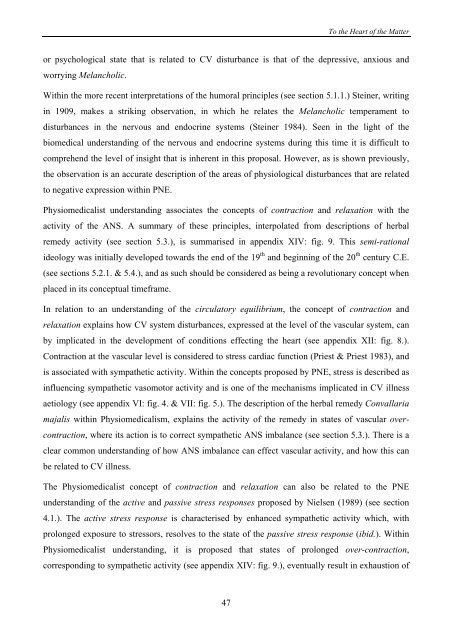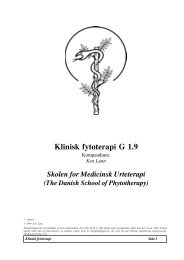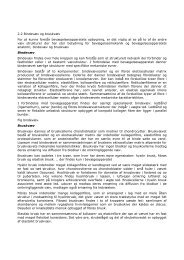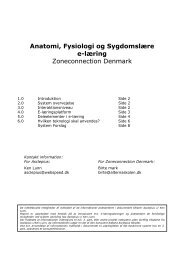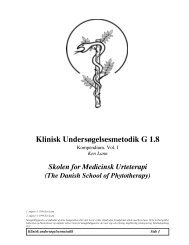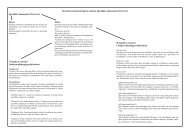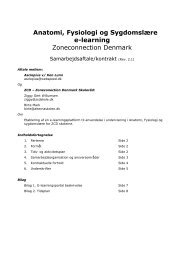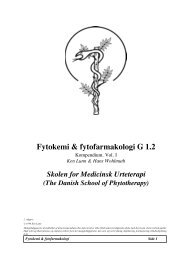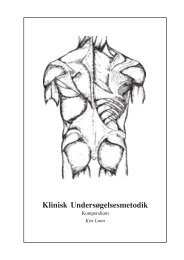PDF File - Asclepius Herbal Consultancy
PDF File - Asclepius Herbal Consultancy
PDF File - Asclepius Herbal Consultancy
You also want an ePaper? Increase the reach of your titles
YUMPU automatically turns print PDFs into web optimized ePapers that Google loves.
To the Heart of the Matter<br />
or psychological state that is related to CV disturbance is that of the depressive, anxious and<br />
worrying Melancholic.<br />
Within the more recent interpretations of the humoral principles (see section 5.1.1.) Steiner, writing<br />
in 1909, makes a striking observation, in which he relates the Melancholic temperament to<br />
disturbances in the nervous and endocrine systems (Steiner 1984). Seen in the light of the<br />
biomedical understanding of the nervous and endocrine systems during this time it is difficult to<br />
comprehend the level of insight that is inherent in this proposal. However, as is shown previously,<br />
the observation is an accurate description of the areas of physiological disturbances that are related<br />
to negative expression within PNE.<br />
Physiomedicalist understanding associates the concepts of contraction and relaxation with the<br />
activity of the ANS. A summary of these principles, interpolated from descriptions of herbal<br />
remedy activity (see section 5.3.), is summarised in appendix XIV: fig. 9. This semi-rational<br />
ideology was initially developed towards the end of the 19 th and beginning of the 20 th century C.E.<br />
(see sections 5.2.1. & 5.4.), and as such should be considered as being a revolutionary concept when<br />
placed in its conceptual timeframe.<br />
In relation to an understanding of the circulatory equilibrium, the concept of contraction and<br />
relaxation explains how CV system disturbances, expressed at the level of the vascular system, can<br />
by implicated in the development of conditions effecting the heart (see appendix XII: fig. 8.).<br />
Contraction at the vascular level is considered to stress cardiac function (Priest & Priest 1983), and<br />
is associated with sympathetic activity. Within the concepts proposed by PNE, stress is described as<br />
influencing sympathetic vasomotor activity and is one of the mechanisms implicated in CV illness<br />
aetiology (see appendix VI: fig. 4. & VII: fig. 5.). The description of the herbal remedy Convallaria<br />
majalis within Physiomedicalism, explains the activity of the remedy in states of vascular over-<br />
contraction, where its action is to correct sympathetic ANS imbalance (see section 5.3.). There is a<br />
clear common understanding of how ANS imbalance can effect vascular activity, and how this can<br />
be related to CV illness.<br />
The Physiomedicalist concept of contraction and relaxation can also be related to the PNE<br />
understanding of the active and passive stress responses proposed by Nielsen (1989) (see section<br />
4.1.). The active stress response is characterised by enhanced sympathetic activity which, with<br />
prolonged exposure to stressors, resolves to the state of the passive stress response (ibid.). Within<br />
Physiomedicalist understanding, it is proposed that states of prolonged over-contraction,<br />
corresponding to sympathetic activity (see appendix XIV: fig. 9.), eventually result in exhaustion of<br />
47


